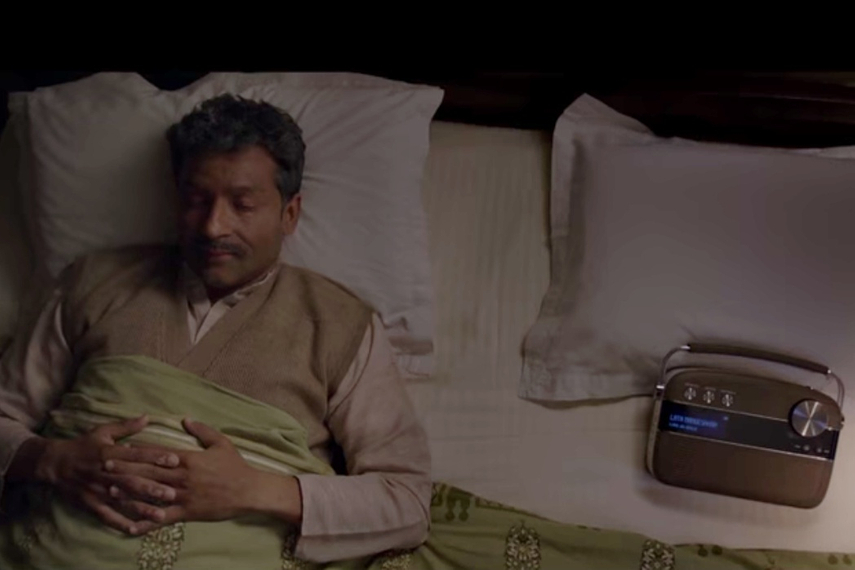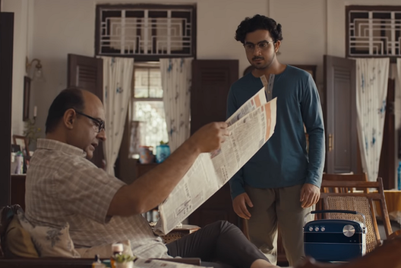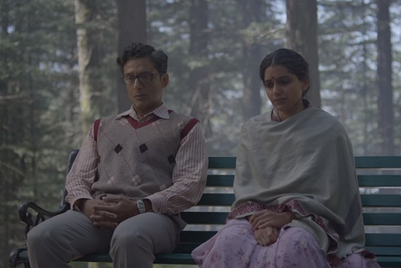
The stock of creative effectiveness work has been rising at Cannes Lions, with entries soaring 34%, thanks in part to a more active CMO agenda and greater brand presence at the festival.
So it wasn’t surprising then, to see Navin Talreja and Kawal Shoor, the creators of one of the most effective creative campaigns out of India in years, on the festival stage here at Cannes Lions 2019 this week. Their highly-lauded Carvaan music player campaign for India’s Saregama music company has won multiple awards in India, regionally at the Effies and Tangrams and in March was named none other than the world’s most-effective campaign, ranking number one in the WARC Effective 100.
But it wasn’t the awards stage that Shoor and Talreja, founders of independent agency The Womb were on, but the speaker session stage, brought to Cannes by WARC to teach the creative community about effectiveness. Interestingly the world’s most effective campaign was entered last year at Cannes, but never even made a shortlist, never mind getting a Lion.
“When something like this happens we try to be hard on ourselves and find the reasons why it didn’t make the shortlist,” Shoor explains, in an interview with Campaign Asia-Pacific in the basement of the Palais, surrounded by this year’s entries. Looking in hindsight, “it was too simple and it was too cultural.”

By now, everyone in India knows the story of Carvaan. The Saregama music company had a library of 117,000 old Bollywood songs from the 1950s to 1980s that nobody was listening to in a young country like India. To get a younger audience to listen, The Womb first entertained remixing the songs, but that wasn’t scalable for the vast library. The company looked at inserting the old songs into popular daytime dramas, but the cost was prohibitive.
At a dead end, it changed focus from getting young people to listen to their songs, to reaching those who would love to listen to the songs—older people. What resulted was not a campaign, but a new product, a digital music player with 5000 pre-programmed songs that was user-friendly and fashioned like a radio. It sold 1 million units, boosted Saregama’s revenue 152% and sent company stock soaring 300%.
The success was unquestionable, but Talreja feels the Cannes jury likely was not able to “understand the power these songs have and what they mean to Indian people and what it means for them to have it for the last 15 years and what it means for them to get it back in a format that they love".
"If you don’t understand that cultural context, it just seems like ‘great, in a world where everyone is creating bots and tech-based innovations, what have these guys done? They’ve gone back and created a radio'," he jokes.
But neither ad man is bitter. Talreja insists they’re not enamoured by Cannes either. Moreover, Shoor points out that cultural disconnects can run both ways, noting that while he is a big Bob Dylan fan, using evocative Dylan songs in global campaigns that run in India just does not resonate at all with 99% of the population.
“Innovate for the old, you’ll make more money.”
Looking at where Saregama’s songs would resonate led ‘The Womb (“a place where the most beautiful accidents happen, bringing new life”) to take a second look at an underserved, considerably wealthier, older demographic. In fact, Talreja and Shoor mused they should start a new agency for the old called ‘The Tomb’.
“The average age hides these people,” Shoor says, noting there are 200 million seniors in India, three times the population of France. But just as youth are quick to point out the gaffes of marketers who try to pitch the young without understanding them, the same is required of the old.
“It requires a whole business team of people thinking of them, understanding how they live, how they use things, seeing where are the gaps… and then communicating to them,” Shoor says. Positioning the product for the emotions older people feel, like loneliness, was terribly important, Talreja adds.
While it took guts to give up on the growing youth demographic in India to create Carvaan, the founders of The Womb says they regularly tell their staff to junk seemingly good ideas and take on scarier ones—so long as they’re based on sound strategy.
Mutual respect and client trust are key
But an agency, even one as small as The Womb, with its 30 staffers in Mumbai, cannot embark on scary ideas without the full understanding and complete trust of the client. Shoor and Talreja suggest agencies need to think beyond the brief and even beyond the CMO’s needs.
“It’s only when you start to force the client to start talking about their business issues—what is really keeping the client’s CEO awake at night—only when you have that conversation does the canvas of ideas that you can offer to a client open completely,” Talreja says.
That means sometimes forcing conversations with top stakeholders. “Accenture Interactive isn’t buying any one of us, so we need to find a way to get into the CEOs' rooms ourselves,” he quipped on stage.
One way The Womb tries to get on level with CEOs, the founders say, is through their refusal to pitch (if you want them to you’ll need to pay a pitch fee). What this does is ensure the relationship begins as one of mutual admiration and respect, not as having an agency in the client's pocket.
“When you start like that,” Talreja tells Campaign Asia-Pacific, “lots of things become far easier after that. They’re more open to share their issues, they’re more open to share their problems. You want to go the extra mile to ensure that you can’t let them down.”
And so it was with Carvaan. Only a confident agency could convince a software company to build a piece of hardware and change its music distribution model completely. Only a CEO that fully trusted the agency could consent.
When Saregama’s CEO approached the point of no return, they recall, he asked them: ‘Are you sure?’ That scared them, Shoor added, and scaring them is a good thing.
When to use product innovation over advertising.
The title of The Womb’s stage session was 'Is Product Innovation Better Than Advertising', but in truth they didn’t title it as such.
“We’re not a product innovation company," Shoor says. "We happened to have a product.
In the case of Carvaan, a product made sense because the songs were completely out of circulation, but the distribution was digital and older users weren’t comfortable using it. It screamed for a product solution."
And while Shoor and Talreja play it down, both the agency and clients alike can’t help but let the success of Carvaan open them to further look product solutions and possibilities. The duo admits it already has two or three new products in the pipeline.
In fact, as the interview evolves, Shoor, thinking aloud, comes up with another potential product on the spot and starts talking to Talreja more earnestly about it.
If it wasn’t clear enough before, it is now. The Womb will not wait first to receive a clear brief before creating new life.
(This article first appeared on CampaignAsia.com)


.jpg&h=334&w=500&q=100&v=20250320&c=1)
.jpg&h=334&w=500&q=100&v=20250320&c=1)
.jpg&h=334&w=500&q=100&v=20250320&c=1)




.jpg&h=334&w=500&q=100&v=20250320&c=1)


.jpg&h=268&w=401&q=100&v=20250320&c=1)

.jpg&h=268&w=401&q=100&v=20250320&c=1)


.jpg&h=268&w=401&q=100&v=20250320&c=1)


